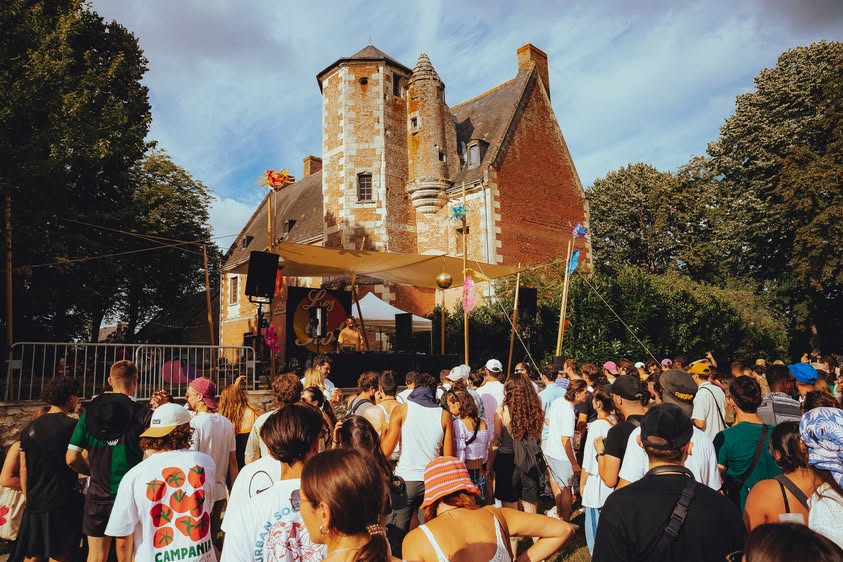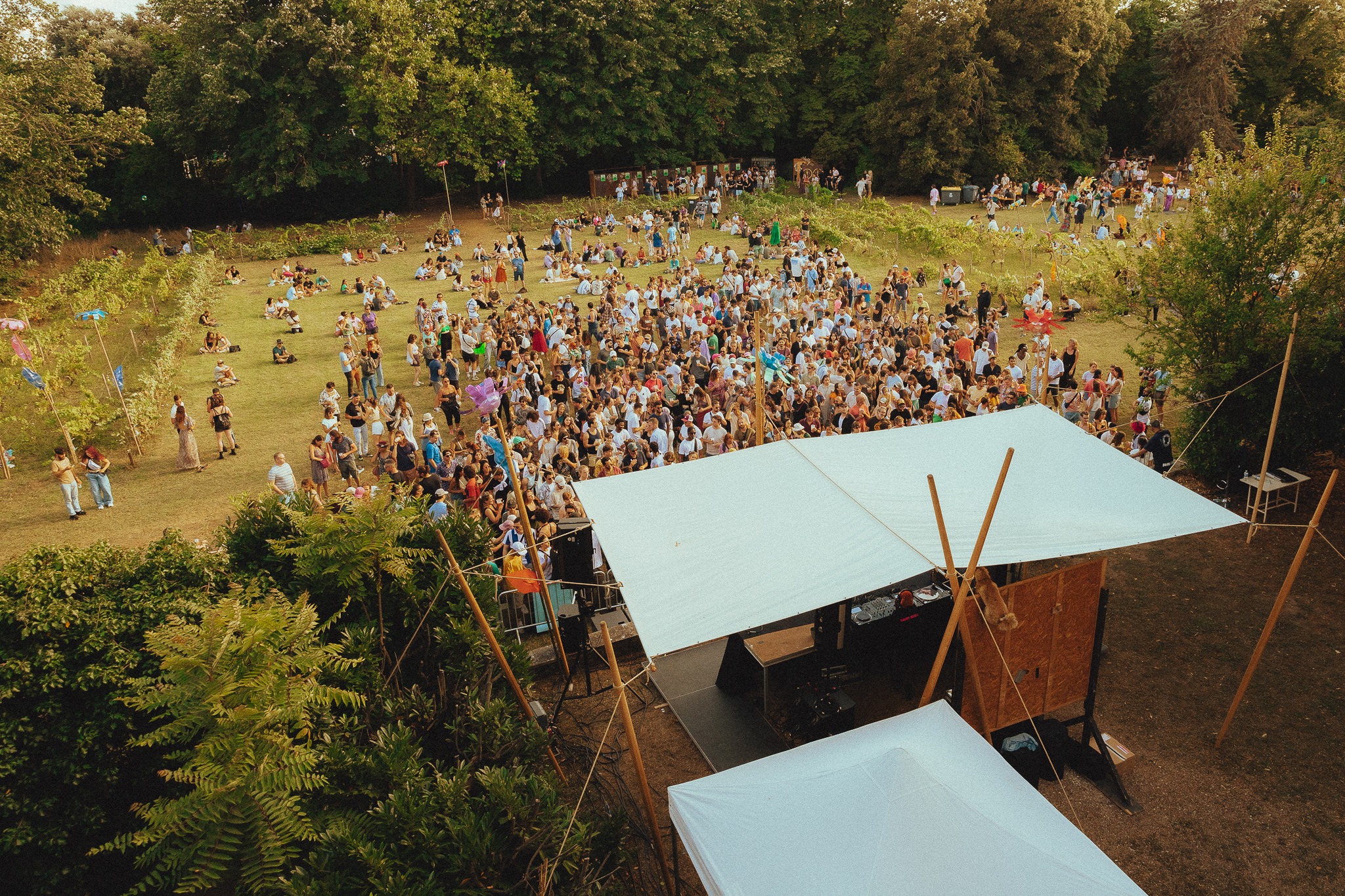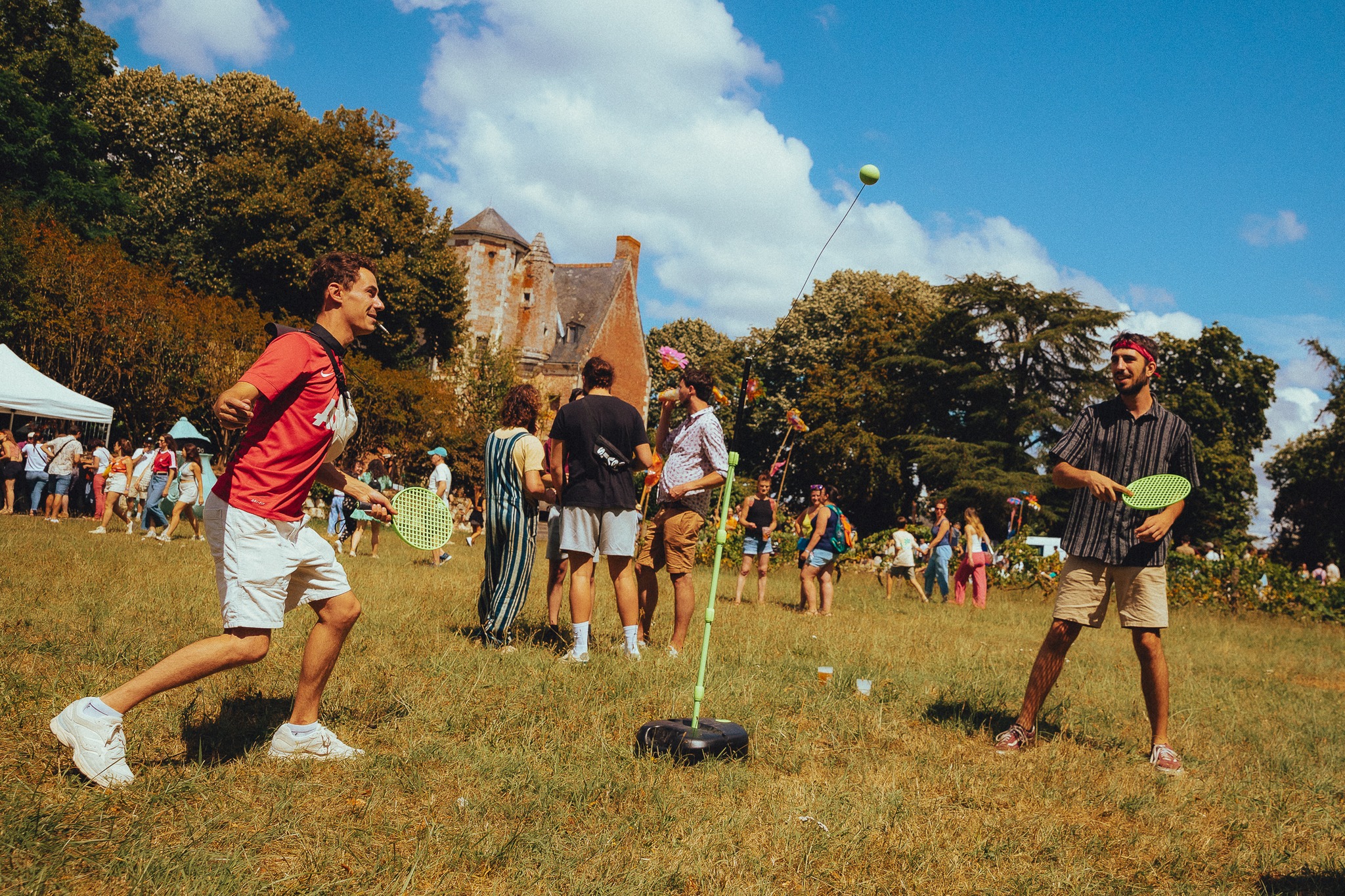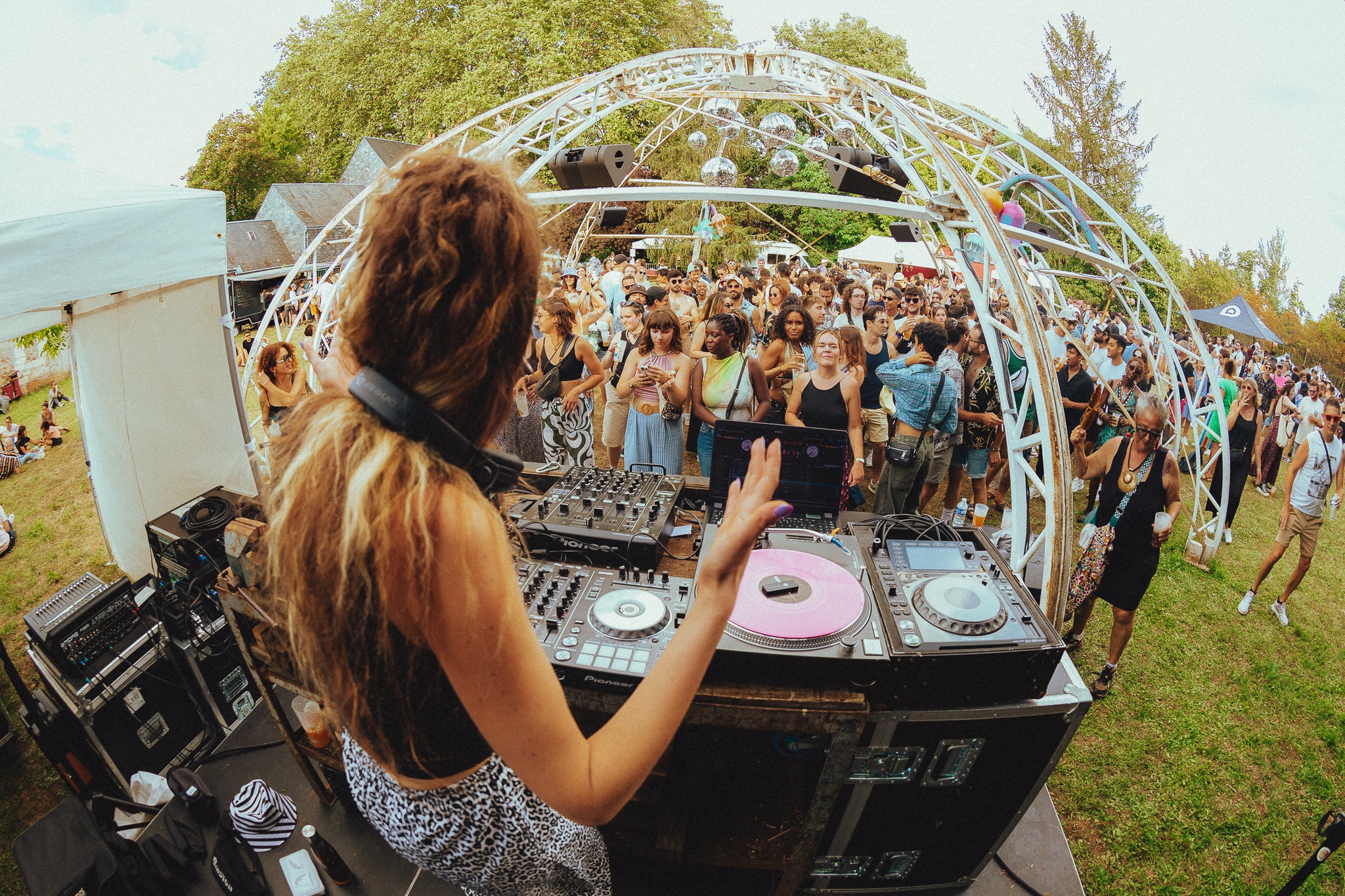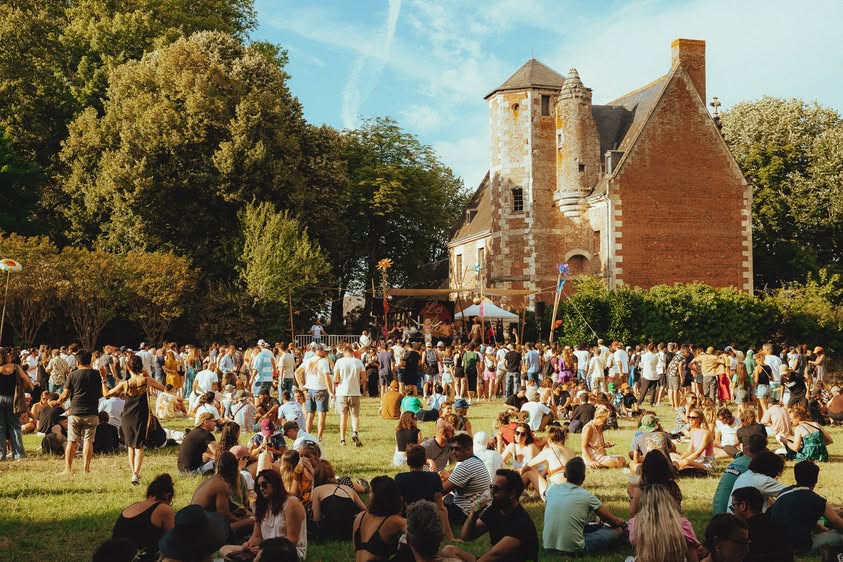Between the Cher and Loire rivers, in the heart of the Tours Val de Loire metropolitan area, the Château du Plessis, surrounded by two hectares of grounds, offers an artistic, cultural and humanist project supported by shared governance. Three hundred members work together on key areas: the arts, artistic and cultural education, history and heritage, biodiversity, solidarity, the social and solidarity economy, and good living.
THE CHÂTEAU DU PLESSIS, FROM ITS FOUNDATION TO THE PRESENT DAY
Over the centuries, the history of the Château de Plessis-Lès-Tours has been marked by a succession of important events. Built from 1463 onwards by Louis XI, a few hundred metres from Tours, it became the decision-making centre of the Kingdom of France until the death of the Illustrious Aragne in 1483.
Its prestigious past as a royal residence and capital of the kingdom extends beyond the reign of Louis XI alone, spanning nearly two centuries (the 15th and 16th centuries) during which eleven kings of France reigned.
For nearly two hundred years, eight kings of France walked this privileged site between the Loire and Cher rivers: Charles VII, Louis XI, Charles VIII, Louis XII, Francis I, Henry III, Henry IV and Louis XIII.
Many decisions marking the evolution of the kingdom were made here, including royal decrees and ordinances, the Estates General of the kingdom and alliances.
From the 18th century onwards, the castle suffered the blows of historical developments, with a series of irreparable destruction and pitiful renovations: it became a beggars' shelter, a farm, a lead factory, a waste disposal site, and more.
It found new life between 1900 and 1931 when it became the first vaccination institute in Europe. The City of Tours bought it in 1932 to turn it into a museum dedicated to Louis XI, which closed in 1995. In 1998, the City of Tours entrusted the estate to the JM Cano Lopez Company. It has been involved in a wide range of artistic, cultural and educational activities and events as part of its popular education and cultural democracy policies.
In 2021, the K. Group launched a new project called Le Plessis Tiers Lieu-commun culturel et humaniste (Le Plessis Third Place - Cultural and Humanist Community). In 2025, the City of Tours sold the estate to the City of La Riche.
Today, all that remains of the castle is part of the east wing with its staircase, which was the king's main residence. Parts of the other wings can be seen on the site, surrounded by the remains of the moat. The brick and stone (tuffeau) construction was the first of its kind in our region.
The castle is set in a park covering almost two hectares, the remains of what was once the first Jardin de la France.
The restoration work carried out since 1998 has created a number of reception and work spaces. The castle and its outbuildings now house three residential areas, a performance hall, three shared workspaces, residential studios, administrative offices, a guest studio and various outdoor spaces.
THE PROJECT
Since 2021, the Tiers Lieu project has been structured around several areas of focus:
ARTISTIC FOCUS: ARTISTIC RESIDENCES
Artistic residencies can be temporary (hosting artistic teams at the start of their professional careers) or permanent for unlimited periods.
The Permanent Artistic Research Group forms the artistic core of Le Plessis. In addition to their research, these artists also support artists in temporary residencies, based on a principle of solidarity and collaboration.
Three facilities are at their disposal: the Logis des Artistes (information and support centre), the Lab'Doc LXI (digital centre) and the Lab'Num Tech (technical centre).
ARTISTIC FOCUS: PUBLIC ARTISTIC AND CULTURAL EVENTS
The Events mark moments of exchange between users (artists, citizens, researchers) and the community as a whole (the public). They stem from joint projects and artistic proposals arising from the project, with a focus on ‘encouraging the public to move beyond mere cultural consumption’.
Two artistic seasons in Le Plessis (Indoor and Outdoor) offer these events, which are proposed by artists in residence (Inspire-Expire, Parcours d'un Créateur, Travaux Pratiques, Chantiers de création), guest researchers (Kabinet Havel), users of the third place (Trans'missions, Lab’art nomades, Ouvertures de saison, Cartes blanches, etc.) and by partner cultural and community organisations (les Désirs Partagés cycle). Numerous festivals also punctuate the two seasons (Parcours Élan pour la Vie, la Fête du Plessis-du-Parc, Ô Les Beaux Jours, etc.).
ARTISTIC AND CULTURAL EDUCATION
This focus area includes activities for everyone or dedicated to people who are ‘far from cultural paths’, brought together in the Pôle Élan pour la Vie: users with disabilities, in precarious situations, the elderly, etc.
On average, 800 users participate in the activities of the Pôle Élan pour la Vie each year.
Other projects enrich this focus: the Lab'art nomades (in nursing homes and rural communities), C'est mon Patrimoine (artistic and heritage workshops) and school projects.
HISTORY AND HERITAGE
The project echoes the res publicae, the common good dear to Louis XI. The history of the Château, the first royal castle in the Valley of the Kings, is highlighted through public meetings, artistic creations, walks, conferences and workshops. Extensive research carried out by the History and Heritage Committee and Les Chroniques du Plessis (a quarterly magazine) is bringing to light aspects of the site's history that have been forgotten for too long. The committee is made up of researchers, academics, teachers, architects and knowledgeable enthusiasts.
BIODIVERSITY
The Château Park is a two-hectare green space in the heart of La Riche and the metropolitan area. With nearly 200 trees of different species, from the majestic avenue of plane trees to the Gingkos biloba, from the Pinot vines to the sensory garden, the Park is one of the emblematic elements of the shared ‘commons’ as it is accessible to all.
The park is promoted through numerous projects: the Garden of the Senses, the Pinot Vineyards, educational workshops, the Plessis land art exhibition, the Festival la Fête du Plessis du Parc, and more.
HUMANISTIC APPROACH
Humanistic values are at the heart of the projects:
Participatory democracy - Shared governance supported by nearly 300 users who are members of seven committees and various levels of governance (collegial council, collegial presidency).
Openness to users who are not familiar with the arts and culture: able-bodied or disabled, regardless of age, origin, gender or social status.
Support for all artists: priority is given to artists at the beginning of their careers, particularly those in the least supported disciplines, without any financial compensation.
Solidarity: more than 130 partners from associations, medical, socio-medical, artistic and cultural organisations support projects in the fields of popular education, cultural democracy and cultural rights.
Social and Solidarity Economy:
This openness to all citizens is marked by our active participation in Social and Solidarity Economy networks: partner of France Active, permanent member of the CRESS board, CESER Centre Val de Loire, co-chair of the Ambition Tiers lieux regional network.
In addition, Le Plessis Tiers Lieu is a public interest organisation, has been awarded the Jeunesse et Éducation Populaire (Youth and Popular Education) accreditation, is a member of France Tiers Lieu, the Gérontopôle CVL (CVL Gerontology Centre) and Patrimoine et Environnement (Heritage and Environment), and is a member of the Coordination Nationale des Lieux Intermédiaires et Indépendants (National Coordination of Independent and Intermediate Places).
*associated member

